- LATE BLOOMERS
NOT EVERYONE IS A ZUCKERBERG. THESE FIVE BILLIONAIRES MADE THEIR FORTUNES AFTER 40.
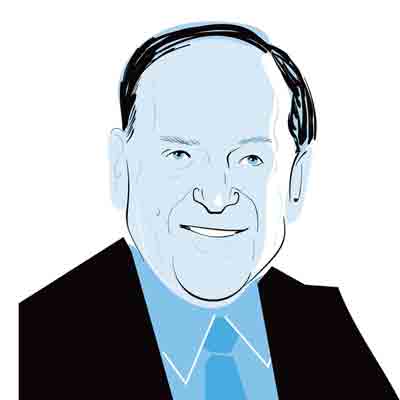 SHELDONADELSON, 84
SHELDONADELSON, 84NET WORTH: $43.3 BIL
The gambling kingpin didn’t get his start in casinos until 55, when he bought the Sands Hotel & Casino on the Las Vegas strip for $128 million. He was no stranger to Sin City, though: Earlier, he had organized and run a computer trade show there.
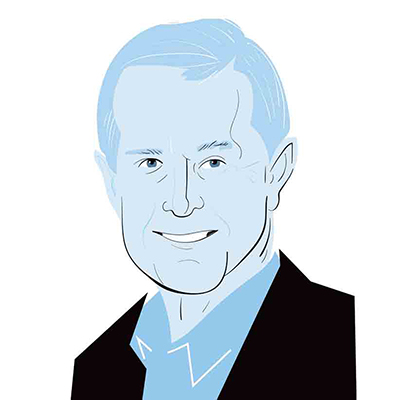 DAVIDDUFFIELD, 77
DAVIDDUFFIELD, 77NET WORTH: $8.9 BIL
The former IBM employee started two business software companies after turning 40. At 47 he started PeopleSoft, which he sold to larger rival Oracle nearly two decades later for $10.3 billion. Soon after the sale, he started Workday, the HR and financial management software company.
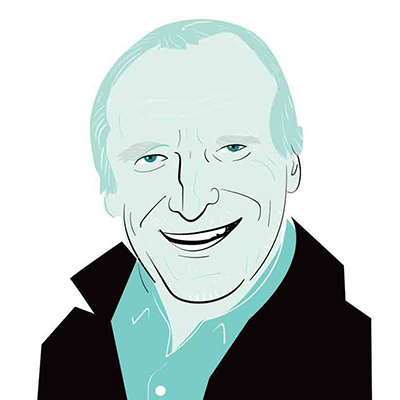 DIETRICHMATESCHITZ, 74
DIETRICHMATESCHITZ, 74NET WORTH: $24.7 BIL
After marketing goods like shampoo and toothpaste as a corporate shill, he cofounded Red Bull at 42. The master salesman pitched the energy drink as fuel for accomplishing daring feats (famous tagline: “Red Bull gives you wings”) and emblazoned the brand on skydivers, motorcyclists and big-mountain skiers.
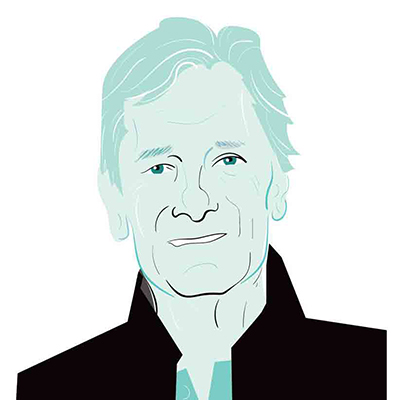 JAMESDYSON, 71
JAMESDYSON, 71NET WORTH: $5.5 BIL
When his family’s refurbished hoover vacuum gave him grief (it seemed to just push the dirt around), Dyson set about creating a better vacuum. Fifteen years and 5,127 prototypes later, at age 46, he brought the world’s first bagless vacuum to market. Now he has more than 60 products—from hair driers to fans.
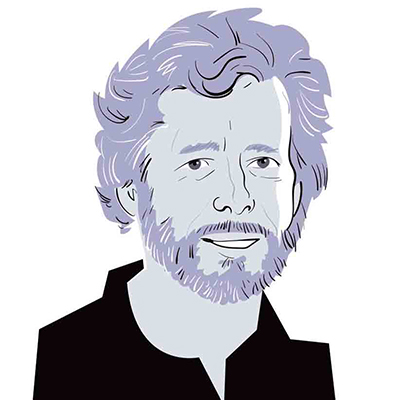 DAVIDCHERITON, 67
DAVIDCHERITON, 67NET WORTH: $6 BIL
In 1998, the 47-year-old Stanford professor wrote a $100,000 check to two Ph.D. students named Larry and Sergey who came to his house and pitched him on a company called Google. Cheriton also cofounded three technology companies after his 40th birthday that were sold or taken public.
BSI Innovation blogs about Innovation, Money, Venture Capital, Grants, Exports and Research and Development (R&D)
Alliance Partners
Thursday, May 31, 2018
THESE FIVE BILLIONAIRES MADE THEIR FORTUNES AFTER 40
Tuesday, May 29, 2018
Venture Capital in Australia: What does Anthony , Frank, Richard, GIna, Mike an...
What does Anthony , Frank, Richard, GIna, Mike and Scott have in common? - They are all in the 2018 top 100 Rich List
 The number one spot was recycling magnate Anthony Pratt ($12.6b) , with Meriton’s founder Harry Triguboff coming in a close second with a personal fortune of $11.45 billion.
The number one spot was recycling magnate Anthony Pratt ($12.6b) , with Meriton’s founder Harry Triguboff coming in a close second with a personal fortune of $11.45 billion.The Lowy’s who built Westfield ($8.26B) ,
Glencore Mining’s, Ivan Glasenberg ($6.85B) and
Gina Rinehart’s Resources ($10.41B) made the top 10.
Scott Farquhar and Mike Cannon-Brookes of Atlassian are up there as well with $5B each.
There are 12 technology Richlisters and Ruslan Kogan aged 35, who grew up in a Housing Commission Home in Melbourne, is back on the list after a 3 year break.
There have been interesting characters that have coloured the pages of the Rich List
Kerry Packer was a regular contender with the West’s 80’s entrepreneurs such as Alan Bond (of America’s Cup fame) and Robert Holmes a Court who built and lost their fortunes.
The Rich List includes immigrants. men and women, young and old, self-made millionaires, , and those born with a silver spoon in their mouths; both the educated and uneducated.
Becoming rich can be a reality for anyone in Australia.
So, looking at the lists these are 8 gems that we can learn from them
1. PROPERTY IS STILL THE NUMBER ONE SOURCE OF WEALTH
2. TIME AND LEVERAGE COMPOUNDS WEALTH
They understand the power of compoundingTime and regular investing grows their asset base.
The rich concentrate on building their balance sheets even more than they do on their profit and loss accounts, usually leveraging with other people’s money (which is why property is such a good thing)
The average age of this year’s Rich List is Stan Perron aged 95, is the oldest member of the list coming in at #15 and is showing no signs of slowing down.
ANYONE CAN DO IT
3. FOCUS ON YOUR KNITTING
One core trait that successful entrepreneurs share is the ability to take a good idea and repeat it over and over again.You become an expert by doing one thing one hundred times, rather than doing one hundred things once.
4. TEAM
Surround yourself with a good team because if you are the smartest person in the room you are in trouble.5. VISION - PLAN - ACTION
Have a vision , formulate a plan - write it down and take action .IN SUMMARY
Invest your money and time into wealth-producing assets and a Vision you believe in. Have strong Values, a long-term Plan, and never lose sight of where you want to end up.One of my mentors from Durban , John Moshal, said he likens himself to a farmer with a plough - With rough and arid land in front, with the farmer ploughing the land , so that those following have the opportunity to farm on fertile ground!
Tuesday, May 22, 2018
Wednesday, May 16, 2018
100 Years Of America’s top 10 Companies
Who do you think the 10 top companies will be in 100 years?
- 3D
- AI
- VR
- Energy /food/water
- Hybrid of banking , communication and tech
- ??
- ??
- 1920 - $5-10b
- 1980 - $50b - 100b
- 2020 - $500b - 1tril
- 2050 - ??
- 3000 - ??
Tuesday, May 08, 2018
Business as usual for SMEs looking to invest in r and d and claim the r&d tax incentive
- So what is this R and D incentive
it is basically a cash rebate to incentivise you for developing innovative products and services.
you could get back between $13,500 and $43,500 depending on your Companys' profitability.
- Are you Eligible
If you are
- an Australian Company
- Undertake R&D Activities in Australia
- Spend Over $20k
YOU COULD BE ELIGIBLE
ps ... if you are 3 years old and your turnover is greated than $1.5m there are a whole host of other grants you can claim
- SME's don't claim for a whole host of reasons
INCLUDING- They dont have adequate systems to record R&D activities
- They do not know what R&D actually is (the legislation is very murky and difficult to interpret - even by the experts
- They don't know what they don't know
Some research indicates that at least 50% of SMES undertake R&D activities and could potentially claim this incentive - but only 1% do!
- The Risk
Budget 2018 Changes
- Changes to percentages to be claimed with companies whose turnover is greater than 20m - giving more to those who spend more on r and d as a percentage of revenue .
- Caps on spend
- Those that claim - names and amounts will be published
- Bigger budget to be spent on compliance - so ensure you have your claim verified and auditable!
Friday, May 04, 2018
Jennifer Zanich - 10xing startups

Jennifer Zanich: UNSW has a clear picture of entrepreneurship
With a decade in Silicon Valley under her belt, Jennifer Zanich knows her way around startup culture, entrepreneurship and venture capital.
She has recently started a role as head of Global Partnerships and Ecosystems, in the Department of Entrepreneurship, at the University of New South Wales, where she designed and led programs like the Founders 10X Accelerator, which identifies high potential startups within the University environment.
“UNSW has had an entrepreneurship initiative for the last five years,” she said. “We have a clear picture for everyone, staff and students, to embed the entrepreneur mindset in their learning and day to day.”
The idea behind embedding these values within staff and students is that the techniques used, such as problem-solving, resilience and the use of frameworks have value for everyone within the learning environment.
With the Founders 10X Accelerator, the University runs a ten week program for high-potential companies within the university. According to Ms Zanich, they’ve so far had unique ideas such as wearable technology in the form of a motorcycle helmet that improves rider reaction time, an asteroid prospecting company that looks for viable mineral reserves in space, and a domestic service designed to give parents back valuable me-time.
“When it comes to startups and entrepreneurship, we’re looking at it from both the domestic perspective, and the global perspective,” she said.
From a domestic point of view, the program is looking at how the university participates in the local startup ecosystem, and what sort of corporate partnerships should be involved. Microsoft is already on board as a partner in the Founder Lab program.
From a global perspective, the university is working with other international educational institutions and venture capital firms. A partnership has been developed with Berkley University in the US, with the international entrepreneurship program, designed to give startups with international aspirations a ‘soft landing’ when they arrive.
“These partnerships ensure the startups get the benefits of being in an international environment, and they’re not just stumbling around,” she said.
Jobs and innovation for the future
The entrepreneurship mindset that UNSW wants to instill in staff and students has a broader application to the Australian economy, and in particular to the future of jobs.
Ms Zanich said that there needed to be a change in the nature of the conversation around jobs in Australia, particularly with the rise of digitisation, automation and machine intelligence.
“There needs to be some leadership here, and a change in the dialogue,” she said. “[Governments] need to discuss the changing nature of jobs, and not lead with the rhetoric around jobs are going to be lost.”
We already know the workforce is morphing rapidly, she said, and that as students graduate there’s going to be a different workforce. This workforce is one where jobs for life don’t exist, and people could have three jobs in a week, let alone in the course of a decade.
“As a nation, we still don’t have any real vision about that,” she observed.
This is why an entrepreneurial outlook is vital for Australians, because those people with that view will be able to adapt and learn, and adjust to the jobs that are coming in the future.
“Right now the government has some focus in digital initiatives, such as promoting STEM, but the piece that is missing is the entrepreneurial skills, the softer skills and the founder focus,” she said.
“We need to cater for the next generation, and deliver students with the experience and abilities to determine, or create their own career outcome.”
Those people with an entrepreneurial mindset will go on to found start-ups, which are an increasingly valuable part of the economy, or become great leaders in industry.
“The debate needs to be lifted to the top levels of the country,” she said. “The focus on technology and innovation is absolutely vital for the ongoing prosperity of this country.”
The University of New South Wales is a valued partner of InnovationAus.com and a co-presenter of the Budget Insider 2018event being held on the evening of May 8 to coincide with Treasurer Scott Morrison's third federal budget. Seats are limited so please book here to attend this policy soiree
